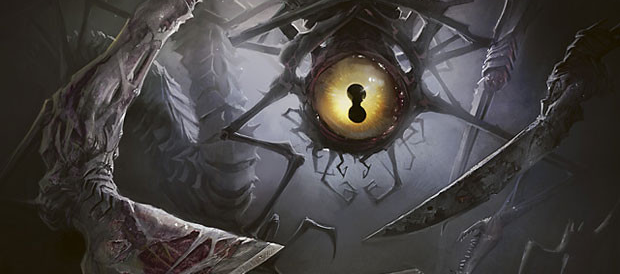Last weekend I returned to my former Magic Stomping Grounds to compete in Grand Prix New York. Only a two hour intermodal haul from Brooklyn to the Secauscus convention hall—how could I resist? I played Naya Planeswalkers, a deck I love, to a solid 7-2 day one for my first ever constructed day two. I promptly went 1-5 for an ugly 8-7 finish, helped along by the shuffler. My round fifteen opponent asked me after our match, “aren’t you playing Nahiri? Chandra? Gideon? Arlinn?” Yes, they are all in my deck. The bottom half, apparently. So it goes.
I would definitely play the deck again. At the end of this article, I’ll share my list from the tournament and my thoughts on it going forward. But first, let’s talk about Magic in general.
Seth Manfield is on a tear this year. He’s basically Steph Curry to Owen Turtenwald’s LeBron James. I remember him grinding east coast PTQs, back when those existed and I played in them, and Hunter bested Seth in the finals of one to qualify for Pro Tour Magic 2015. Now he’s the world champion and making a good case to repeat. It’s inspiring. Very little inspires me. Right now, Seth Manfield does.
What does it take to crush the Magic world? Consider this tweet:
pretty hype for #gptoronto the deck I’m playing is spicy
— Seth Manfield (@SethManfield) April 29, 2016
Which deck was that? Four Color Cryptolith Rite, which also happens to be the deck he crushed in the semifinal and final of Grand Prix New York a week later, with a freshly-brewed black-white control deck. It’s almost like Seth was building the metagame for the top eight he would win. That’s some next level deckbuilding.
Now, I’m not saying that Seth built and promoted the Four Color Rites deck for GP Toronto with the intention of setting up a favorable metagame for his preferred control deck a week later at GP New York. But that sounds like something one could do, given a prominent platform and consecutive major tournaments in the same format. So why not? The grand prix schedule doesn’t line up so conveniently too often, but the Star City Games Open Series does. Why guess the metagame week to week when you can sculpt it instead?
On my flight home from New York (actually New Jersey) I felt indulgent (and bored) so I paid for the in-flight WiFi. This decision was rewarded by reading Brian David-Marshall’s Oral History of Limited. Go explore the early days of professional Limited—it’s fantastic. Read about discovering the mana curve! In the article, Pro Tour hall of famer Gary Wise repeats a common refrain about the old days:
I think Rochester Draft was a far more skill-intensive format than Booster Draft. Any time you increase the amount of information that everyone has at their disposal, the format becomes more skill-intensive. The complete information aspect of drafting really adds to the strategic elements of play.
This statement is true as far as it goes. In Rochester draft, you can control your opponent’s deck, but you have to be an expert to do so. The idea is similar to manipulating a Standard metagame across consecutive tournaments—you don’t have to play perfectly if you face a series of favorable matchups. Does that increase the level of skill required to succeed? I’m not so sure. It shifts the game’s focus to a place only the best even know to look. But you don’t have to be a sharpshooter to win a knife fight with a gun. You just have to persuade your opponents to bring inferior weapons.
Drafting consistently well is hard and deep, similar to that of reading an evolving Standard metagame week to week. The games themselves require more skill, because you have to face all comers, not just your chosen inferior strategies. Given the opportunity to sculpt the metagame, top players will exploit this and probably prefer being able to do so. That does not mean it is a superior measure of skill.
What if we played games of Magic with our hands revealed? Would that be more skill-intensive? I don’t think so. The game would become more of a puzzle—if there’s a way to win, the superior player will probably find it. What if the cards massively favor your opponent, though? You need to manipulate hidden information, use subterfuge, to win with inferior cards. Good luck doing that playing face up. If you’ve sculpted your opponent’s deck to lose to yours, then it matters less. But what if you’re playing something like faeries? That deck preys on uninformed decisions. If I know whether you have Mistbind Clique or Cryptic Command in hand, you lose that edge.
Throughout this discussion, the focus of skill has been shifting from one part of the game to another. That doesn’t create more skill any more than check kiting creates more money—it is a mere illusion of growth through apparent bilocation. I have $2000 in two different checking accounts, but in reality it’s only $2000 total that happens to be in whichever account you are studying at the moment. Adding new strategic dimensions to a game creates more opportunities to use your skill. But what if adding a new dimension detracts from the other dimensions? To require more skill, you need to add new dimensions while retaining the depth of the old ones.
Watching a good player win with a known-to-be-superior deck is pretty boring. I fell asleep in my hotel room Sunday evening watching Seth cruise through the last two rounds of the top eight. If someone already won before the game starts, you just watch to make sure it plays out as expected. Sometimes you get to see a fantastic game, like the one Luis Scott-Vargas took against J.C. Tao in the semifinals of Pro Tour Oath of the Gatewatch. But you knew blue-red Eldrazi would crush the colorless version.
So what does that mean for Standard? If you aren’t one of the thought leaders of the metagame, you need to consider that the thought leaders may be manipulating the metagame against you. Whether that is an overt strategy engineered weeks in advance, or merely the result of multilevel thinking, doesn’t matter. Just ask Seth:
The past few weeks I had been switching decks from week to week trying to Anticipate the metagame correctly. When Standard is diverse with a wide range of archetypes, being able to accurately guess a metagame is crucial to deck selection, and something I try to take into account. Rather than sleeve up the Four Color Rites deck I played in Toronto, which is an excellent choice against the popular creature-based strategies of the format, I went one level beyond that. I knew that W/B Control has a good matchup against Cryptolith Rite decks because of all the mass removal. It turns out that Four-Color Company was actually the most popular deck in New York, so playing control was a good call.
Articles and tweets tell you where the metagame is now, or where it was last week. You need to prepare for where it will be tomorrow. The thought leaders will give you important data points, but those are merely beacons in the fog. You have to find your own way. Choose a path that intersects favorably with the recommended route.
Where did my navigation lead me in New York? I wanted to play a deck that didn’t care about Kalitas, could manage the board effectively, and provide many unpredictable angles of attack. Here’s what I ran:
Naya Walkers
I wanted more lands than other lists were playing, with the full set of Needle Spires. It plays so well with Sylvan Advocate, Gideon emblems, and Nissa counters. I think now that 25 lands is probably the correct number, and I sided out the third plains many times. I’d probably cut Dromoka for another Arlinn. But Needle Spires is great.
Oath of Chandra is also great. It kills all the relevant early creatures, and the second ability pressures opposing planeswalkers in a surprising way. I could see playing more than two copies. The ability to incidentally pressure planeswalkers while developing your plan is very valuable in the current metagame. This was also one of many versatile uses for Atarka’s Command, which proved fantastic out of the board all weekend. It helps you go under ramp and control, lets you grow Sylvan Advocate or trigger Nissa, Vastwood Seer a turn early, takes three loyalty off a planeswalker, throws off combat math, and can even help block Ojutai or Avacyn in a pinch.
Where do we go from here? Personally, I need to figure out the new Modern for Grand Prix Los Angeles. There have been some tectonic shifts in the metagame. I’m excited to put Affinity down for a while and dig out my Remands and Electrolyzes. The land is changing around me. Is it Scapeshift or Nahiri?
Carrie O’Hara is Editor-in-Chief of Hipsters of the Coast.



